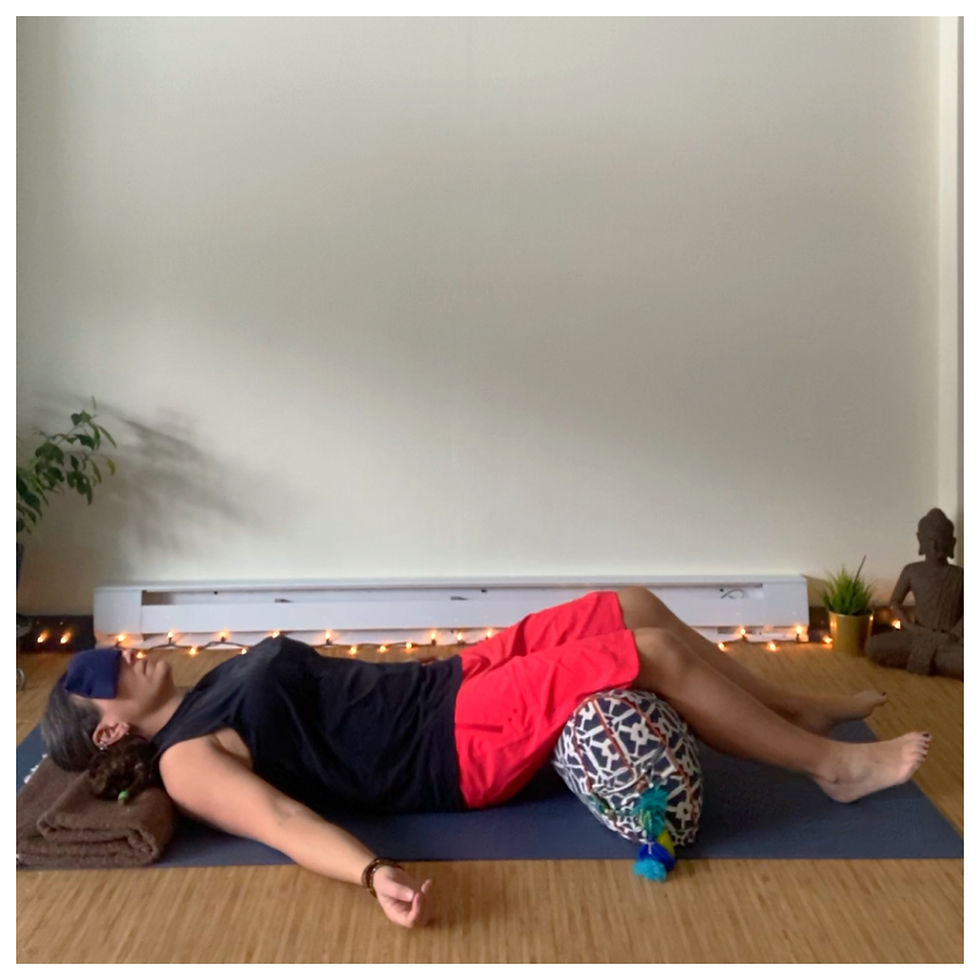Adapting Habitual Movement to Decrease Repetitive Injuries + Body Imbalance
- Joy Zazzera

- Sep 29, 2020
- 3 min read
WE CAN ONLY EVER DO WHAT WE CAN DO ... FOR NOW. And for now, if you can do things 1 way, you’re a rock. If you can do things 2 ways, you’re a light switch. If you can do things 3 ways, you’re an adaptable human with great potential for movement variety, and more options in your tool box when something doesn’t go as planned, like a misstep and loss of balance.

If we are only ever doing things one way, it doesn’t necessarily mean that way is wrong. It does however mean that we’ll always tend to move only in that one way, MAKING US MORE SUSCEPTIBLE TO REPETITIVE USE INJURIES AND IMBALANCES IN THE BODY. This not only applies to ATHLETES who perform sport-specific movements repetitively, but for ANY PERSON who moves throughout their day with little awareness of how they are moving - which is MOST OF US!
Over the past few months, I’ve been studying a lot about movement variety and reshaping yoga poses to better suit real bodies - bodies like mine with old injuries and physical limitations like joint replacements, bodies susceptible to new injuries because of imbalances from old injuries, and bodies that repeat the same habitual movements day in and out. I teach yoga to help a person better understand their unique body and it’s movement potential using the most accessible poses of yoga for each person. The shapes of yoga themselves, are meaningless without an understanding of the intent of why we move through the shapes. If I can see a client build a pose, from entry to exit, I can help them adapt according to their present needs, the “for now” of what they can do, then, give them more options within the pose itself - adapting either to accommodate for a limitation or to target a certain group of under-used tissues with the intention of strengthening or over-used tissues that need relaxing.
One way to create targeted bias into tissues often over-looked or under-used is by learning how to isolate and segment certain areas, and by creating tension across whole areas of joints. Breaking down common poses we tend to not think too much about, like Cat + Cow or Staff Pose, we have the opportunity to quiet movements in areas that move a lot in order to bring more movement into areas that don’t. We have the opportunity to send new sensory inputs into our tissues and over time, give our body more options to choose from as we move, and more ways to strengthen the whole body.

There isn’t only one way to perform Warrior I, Bridge or Chair nor is there only one way to relax into a hip-opener. Using yoga and the poses to learn more about our body, one of the biggest take-aways for me is the opportunity to HELP CLIENTS ADAPT THE POSES AND MOVEMENTS IN A WAY THAT BUILDS THEIR CONFIDENCE, MAKES THEM FEEL GOOD, AND GIVES THEM MORE WAYS TO DO THINGS.
I tend to stay away from the terms “proper” and “the right way” because of the fear these terms instill. ALIGNMENT IS NOT ABSOLUTE. IF WE DON’T TRAIN OUR TISSUES AND OUR NERVOUS SYSTEMS TO MOVE OUTSIDE OF OUR HABITUAL PATTERNS WE LOSE ACCESS TO THOSE UNDER-USED AREAS OF THE BODY. We see this translate in decreased mobility, stability and flexibility, and increased pain and disfunction. If I’m only telling you there is one way to do things, I’m teaching from a place of instilling fear, and not from a science-based approach to human movement. Nothing bad is going to happen to you if your back foot in Warrior I is not at a 45 degree angle and flat on the mat, or if you don’t pin your shoulder blades down on your back as you raise your arms overhead.

This philosophy supports the goals I have for my return to teaching in-person. I am looking forward to the opportunity to assess many of the most common poses we have been practicing at home for the past 6 months. MY GOALS ARE TO HELP YOU BETTER UNDERSTAND YOUR PRESENT HABITS, SHOW YOU WAYS TO REBUILD GREATER POSTURAL AND STRUCTURAL AWARENESS AROUND UNDER-USED AREAS OF THE BODY AND OVER TIME, GIVE YOU THE MOST DIVERSE TOOL BOX FOR MOVEMENT POSSIBLE FOR YOU!
Do you know of at least three poses or movements where you could benefit from a ground-up rebuild? Or perhaps three poses that feel too easy for you as if you can move through them without much thought? Thinks about it next time you roll out your mat for your home practice!







Comments